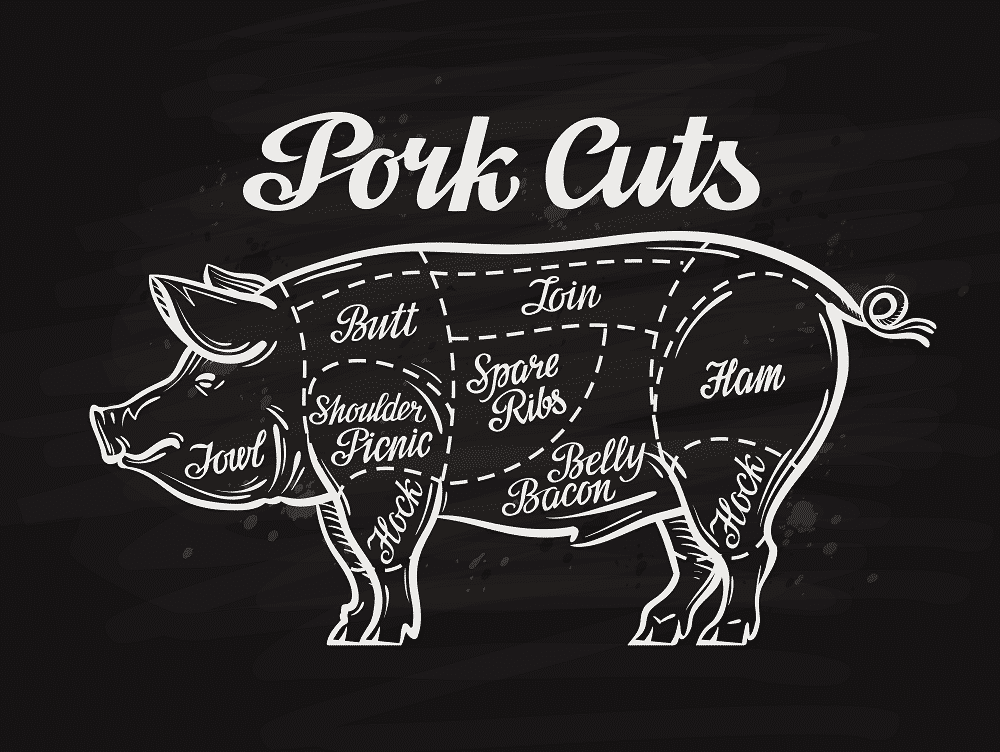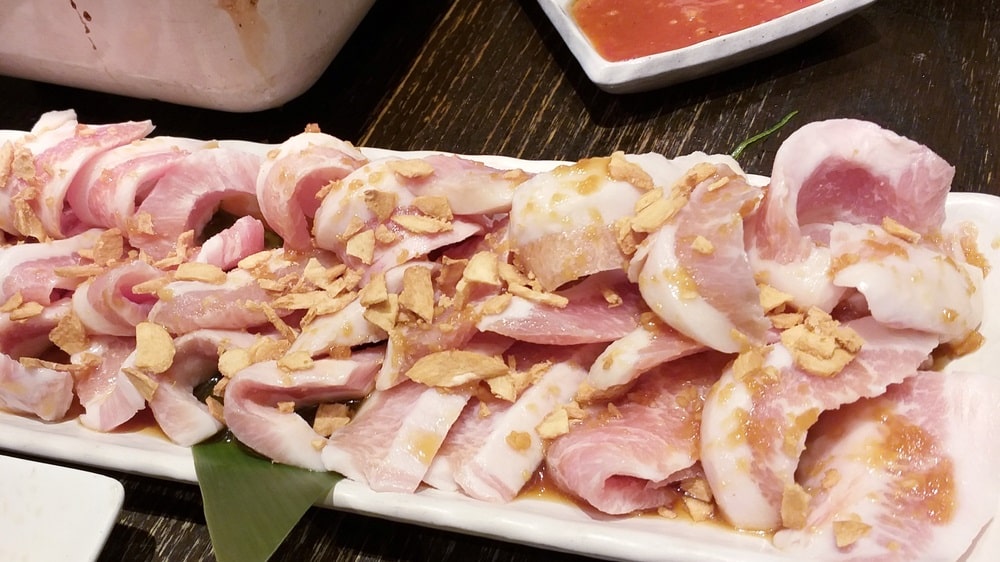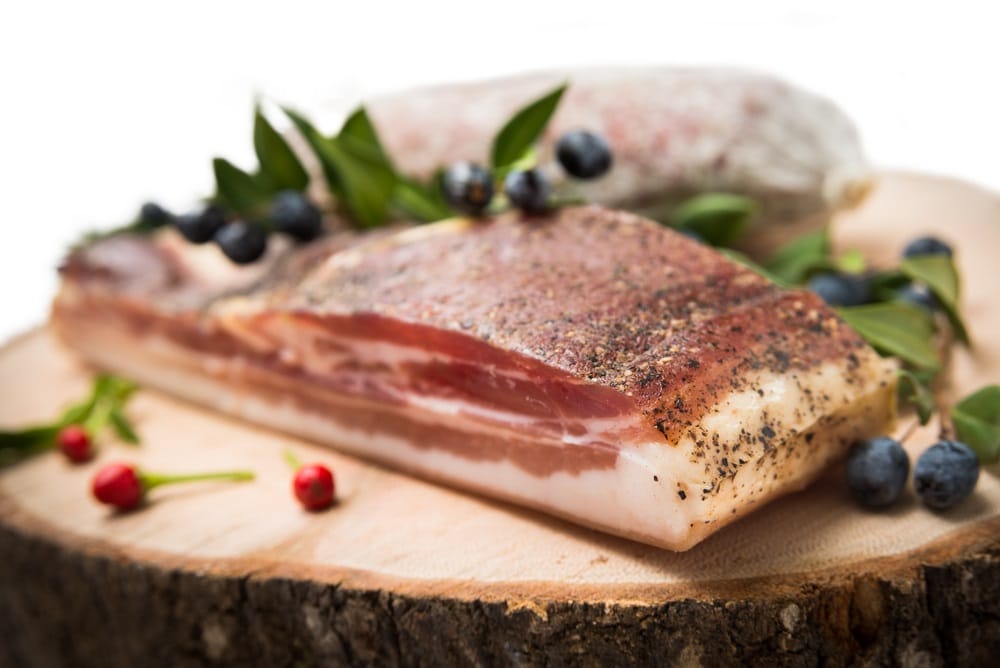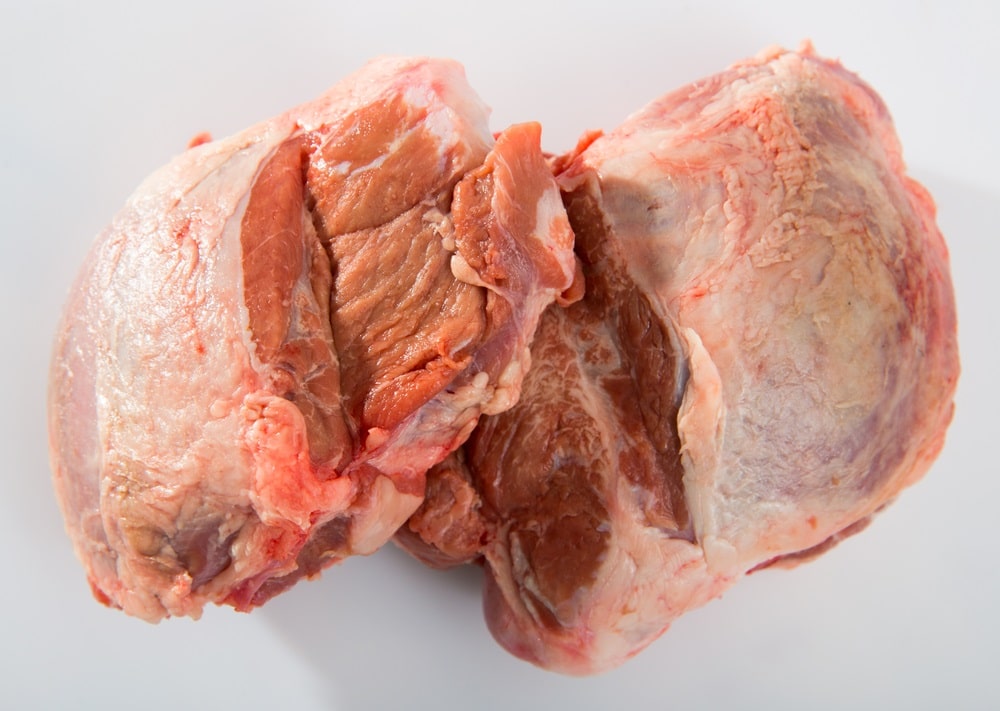
You have to be careful when eating pork. It can be nutritious, but it is also high in sodium and saturated fats. Yes, the entire pig or hog can be eaten, although not all parts are consumed in all cultures.
The most commonly consumed parts are pork chops and bacon, but other parts such as the jowls, ears, tail, and cheeks are also used in different dishes.
Nearly all parts of the pig are edible
Some parts of the pig may have a stronger flavor than other parts, while some parts may also be higher in fat than other parts. Nearly all parts of a pig are edible.
You can eat the loins, the neck, the head, the shoulders, the back legs, the front legs, and the belly. But what about the jowls or cheeks? Yes, they can be eaten, but how? Are there differences between pork jowl and pork cheek?
Pork jowls are delicious, juicy cuts of meat from the head of the pig. Pig cheeks, on the other hand, are smaller but also delicious. They come out as nuggets of flesh.
They come from the cheeks of the pig. The cheeks aren’t to be confused with the jowls, and yet some people use the terms interchangeably.
The jowls are fattier
Essentially, the difference between the two cuts of pork is that the cheek comes from higher up on the head, and it is a leaner meat than the jowls.
Jowls come from the lower jaw area, and the meat is fattier. Let’s take a look at some differences between pork jowls and pork cheeks.
Let’s take a look at some other differences.
Pork Jowl vs. Pork Cheek
| Pork Jowls | Pork Cheeks |
| Pork jowls are tender and tasty cuts of meat. People consume jowls fried and crispy. They eat it just like bacon. It can be great to add to other foods too. | Slow-cooked pork cheeks are super tender and tasty. |
| The jowls are the biggest cut of meat on the pig’s head. They are located near the jawbone. Some people call it the pig cheek. Sometimes the skin around the area is included. It’s an affordable pork cut. | Cheeks have become increasingly popular cuts of meat as more and more chefs add them to their recipes. Cheeks need to be slow-cooked until tender. |
|
Pork jowls can be cured, like bacon. It can also be smoked, braised, or slow-cooked. They are a delicacy around the world. People love the succulent flavor and tenderized pork jowl. |
They’re a cheaper, leaner cut, but they will enhance a stew or casserole, especially when slow-cooked. |
| It’s a good idea to tenderize it before grilling. To tenderize the jowls, bring a pot of water to a boil, add salt and pepper, and add the pig jow. Lower the heat and simmer for about an hour. Then go ahead with your recipe. | When you cook pork cheeks, pat them dry after removing them from the packaging, season your meat, and fry with oil. Then place the cheeks in your casserole dish. Remember to add red wine and cook in the oven for about 3 hours. |
| Pork jowls are found on the lower part of the pig’s head. | The cheeks are found on the lower part of the pig’s head, just below the jowls. |
| The jowls can be used as a seasoning for beans or cooked with green vegetables such as collard greens. You can chop it up finely and use it as a garnish on sandwiches or pasta. | Interestingly, the Spanish braise their pig cheeks in sherry with prunes. The Italians cure the jowl to make guanciale, which is cured jowl. It’s a popular ingredient in stews. |
| Pork jowls are fattier than pork cheeks. You have to be careful how you cook them as the meat can become dry and tough. | Pork cheeks have less fat but are juicy and tasty when cooked properly. The secret lies in cooking the pork cheeks slowly. This allows the meat to tenderize and the flavor to develop. |
|
Pork jowl has a long culinary history. Today, underutilized cuts like jowl are becoming more popular. The meat is cured and smoked and then made into bacon-like strips. Cooks love to use this part of the pig to flavor pasta dishes. |
When slow cooking, a good idea can be to cook the cheeks in a pork-based stock, as this can help the cheeks turn out super succulent. The flavor of the cheek is stronger than other similar cured pork products. |
| Pork jowl is likened to belly bacon in terms of texture and flavor. Jowl has a higher meat-to-fat ratio and comes with a rind of skin around the outsides. | As a rough guideline, if you are slow cooking, your pork cheeks will take about 3 hours to slow cook. |
| Pork jowls tend to be bigger than pork cheeks. They are also flatter. | Pork cheeks are smaller and rounder. |
|
Both pork cheeks and pork jowls are perfect for barbecues. They are typically sold fresh or frozen. Cooking instructions are always on the packaging. If you’re buying them at your local grocery store, they will be packed in vacuum-sealed plastic packaging. However, if sold fresh, you will get them at a butcher shop. Sometimes pork cheeks are available canned as well. |
|
Try them both!
Pork jowl vs. pork cheek: what’s the difference? There’s very little difference. Both are delicious, succulent pieces of meat.
For those who prefer fattier meat, jowl would be the first choice. A lot, however, depends on the recipe you’re making, but ultimately the best thing is to simply try them both.




